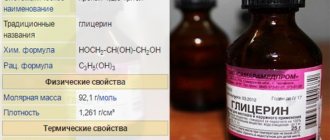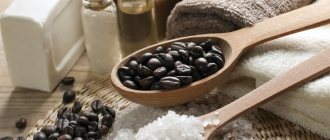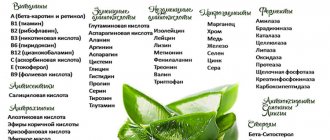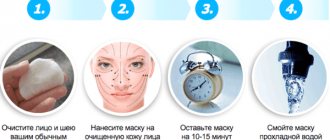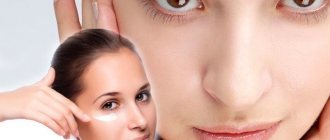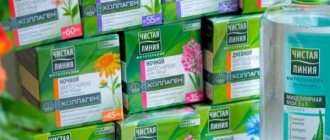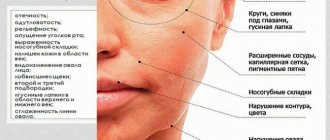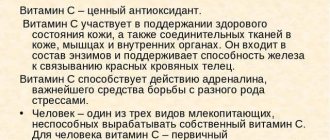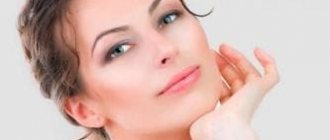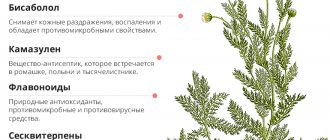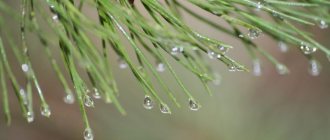Moisturizing cream is a must-have attribute of daily care for every woman. The opinion that oily skin does not need to be moisturized turns out to be wrong. Oily skin reacts to an internal lack of moisture by increasing the production of sebum, and this phenomenon can hardly be called pleasant. Therefore, there are separate recipes for caring and moisturizing products for oily skin. Let's look at them, as well as algorithms for creating creams for other skin types. But first, let's look at the general principles.
How to make homemade cream base
Homemade moisturizers are prepared using approximately the same algorithm. The proportions may change, additional ingredients may be added to it, but the basic idea remains.
- The main components of the cream are an oil base, an emulsifier and a basic liquid. The base is prepared using lanolin, glycerin and vegetable oils. An emulsifier is needed so that the components of the product interact and the finished product acquires a creamy consistency. Do not use tap water as liquid for cosmetic products. Some recipes recommend using mineral water, some recommend distilled water, others are based on herbal infusions or even fresh juices. And this is the best option for a moisturizer.
- Additional ingredients are essential oils and vitamins. They are added at the end of preparing the cream. Such components give the finished product healing properties and enhance the moisturizing effect.
- What should be the ratio of all components? For one part base, prepare two parts water. There should be little emulsifier, 2 percent of the total volume. Additional ingredients are added in the amount of a few drops.
The algorithm for creating a cosmetic product is as follows:
- Mix the base components and heat them in a water bath. Keep the temperature no higher than 40 degrees, otherwise the cream can be overcooked and it will not work.
- When the desired temperature is almost reached, an emulsifier is added to the mixture, and then liquid. 2 more minutes. The product must be kept on fire, then we remove it.
- Cool the product (this is done exclusively at room temperature), add additional ingredients. Afterwards, you need to beat the product with a blender. Homemade cream is ready.
By adding certain ingredients to this base, you can give the cream the properties you need. Let's look at how moisturizing types of cosmetics are prepared.
Best Recipes
Oil based
Ingredients:
- Vanilla ether – 5 drops.
- Macadamia oil – 10 gr.
- Shea butter – 1 tbsp. spoon.
Preparation: Mix the oils and heat them to 40-45 degrees, then add vanilla ether and mix everything thoroughly.
Application: The cream is used for facial massage, after scrubs, cleansing masks and under makeup.
Oil cream stimulates the regeneration of skin cells, providing a rejuvenating effect.
Fortified
Components:
- Cucumber extract – 0.5 tbsp. spoons.
- Sour cream – 1 tbsp. spoon.
- Tocopherol – 5 g.
- Retinol – 5 gr.
Production: All products are mixed and thoroughly whisked, after which the cream is placed in a cool place for 1-2 hours to thicken.
Usage: The cosmetic product is applied to the facial skin in a thin layer and rubbed in with light massage movements.
Vitaminized cream perfectly nourishes the skin at the cellular level, saturating it with vitamins, minerals and moisture .
Vaseline
Ingredients:
- Vitamin “B2” – 1 ampoule.
- Sage essential oil – 5 drops.
- Cosmetic Vaseline – 1 tbsp. spoon.
Preparation: All products are mixed and whisked until a homogeneous substance is obtained.
Application: The cream is suitable for daily use, after washing or peeling procedures.
Vaseline cream perfectly moisturizes and softens the skin .
Cream with mumiyo
Components:
- Nettle extract – 5 g.
- Olive oil – 15 gr.
- Mumiyo – 5 gr.
Preparation: Olive oil is heated to a temperature of 55-60 degrees, after which mummy is added to it and stirred until it is completely dissolved. Then nettle extract is added to the mixture, everything is thoroughly mixed.
Use: This product is used twice a day (morning and evening), applying it to problem areas of the skin, rubbing in with fingertips.
This product perfectly renews the cellular structure of the skin and also helps to cope with various skin problems (pimples, blackheads, irritation and stretch marks).
Based on beeswax
Ingredients:
- Sea buckthorn oil – 1 tbsp. spoon.
- Propolis – 5 gr.
- Beeswax – 15 gr.
Preparation: Grind propolis and wax, then melt in a water bath and add sea buckthorn oil, mixing everything thoroughly.
Application: The cream is used as a softening and moisturizing agent after peeling procedures and the use of deep cleansing masks.
This product protects the skin of the face from the aggressive effects of external factors by creating a thin protective film on its surface, also nourishing it with beneficial microelements.
With aloe vera
Components:
- Chamomile flower oil – 5 g.
- Aloe vera (juice) – 2 tbsp. spoons.
Preparation: Cut aloe vera leaves are placed in the refrigerator for 14-15 days, after wrapping them with permanent paper. Afterwards, you need to squeeze the juice out of them and mix it with chamomile flower oil.
Application: The cream is applied to the skin of the face and eyelids twice a day (morning and evening), applying a thin layer and lightly massaging with fingertips.
This product has a rejuvenating and refreshing effect . It is especially important to use it during hot periods (summer and spring).
Glycerin
Ingredients:
- Vanilla - on the tip of the knife.
- Coffee extract – 0.5 tbsp. spoons.
- Glycerin – 15 gr.
Preparation: Heat glycerin to 45-50 degrees, add coffee extract and vanilla to it, bring to a homogeneous substance.
Usage: The product is applied to the face using a sponge before using the matting composition.
This product perfectly moisturizes and retains moisture from the inside, preventing cell dehydration.
Gelatinous
Components:
- Mango butter – 10 gr.
- Red wine (not fortified) – 10 g.
- Gelatin – 1 sachet (15 g).
Preparation: Pour wine over the gelatin, let it swell, then heat it in the microwave until completely dissolved. Mix the wine-gelatin mixture with mango butter until a homogeneous substance is formed.
Application: The cream is applied before bed to problem areas of the skin.
This product is a night lifting cream that improves the overall condition of the facial skin.
Cocoa butter based
Ingredients:
- Patchouli essential oil – 5 drops.
- Green tea (extract) – 5 g.
- Cocoa butter – 1 tbsp. spoon.
Preparation: Heat cocoa butter to 50-55 degrees until it melts. Add extract and ether to it, bring everything to a homogeneous substance. Let the cream cool.
Usage: This cosmetic product is applied to problem areas of the skin and rubbed in using fingertip massage movements. Use it before bed to prevent the appearance of sagging and wrinkles.
This product has a protective and nourishing effect, saturating skin cells with beneficial microelements.
For hypersensitive skin
Components:
- Vitamin “A” – 1 ampoule.
- Pomegranate oil (seeds) – 5 g.
- Badger fat – 1 tbsp. spoon.
Preparation: All components are thoroughly mixed in a blender until a homogeneous substance is obtained.
Application: Before using the cream, cleanse your face with milk. Apply a thin layer and rub in in a circular motion. Use twice a day (morning and evening).
This cosmetic product perfectly cares for and soothes sensitive skin.
For combination skin
Ingredients:
- Grapeseed oil (seed) – 5 ml.
- Viburnum juice (fresh) – 5 ml.
- Lanolin – 1 tbsp. spoon.
Preparation: Heat lanolin to 50-60 degrees and add grape oil to it, then mix the composition with viburnum juice until a homogeneous substance is obtained.
Usage: The product is rubbed into the skin of the face before applying makeup (20-25 minutes before application).
The product perfectly moisturizes and nourishes the skin , and also eliminates oiliness.
For oily skin
Components:
- Orange oil (essential) – 5 drops.
- Chicken egg – 1 pc.
- Kefir (1%) – 1 tbsp. spoon.
Preparation: The pre-separated protein is whipped with a mixer or whisk, then mixed with kefir and orange oil. Everything is thoroughly mixed.
Application: The cream is used once a day, after cleansing the face, rubbed into the skin with circular movements.
The product helps tighten pores and also gives a matte effect to the skin.
For dry skin
Ingredients:
- Shea butter – 1 tbsp. spoon.
- Geranium hydrolate – 5 g.
- Avocado oil – 10 ml.
Preparation: Melt shea butter in a water bath, add avocado oil, stirring continuously, then mix the resulting oil composition with geranium hydrolate until a homogeneous substance is obtained.
Use: This product is used before bed, after removing makeup from the face. It is applied to the surface of the skin and lips, rubbing in smoothing movements.
The product perfectly replenishes lost fatty acids and minerals, and normalizes the water balance of cells . Used as a night lifting cream.
For face lift
Components:
- Cinnamon essential oil – 5 drops.
- Laminaria extract (algae) – 5 g.
- Sour cream – 1 tbsp. spoon.
Preparation: Sour cream is mixed with kelp extract and cinnamon essential oil. The mixture is thoroughly whisked until a light, airy substance is obtained.
Application: The cream is applied to the face and rubbed in for 1-2 minutes. It is recommended to use the product after deep cleansing (peeling procedures).
This cosmetic product has a lifting effect, smooths out wrinkles and tightens the facial contour. Recommended for daily use by people 40+ years old.
Sunscreen
Components:
- Wheat oil – 5 ml.
- Olive oil – 1 tbsp. spoon.
- Ground coffee (natural) – 10 gr.
Preparation: Pour organic oils into the coffee and place in a closed container that does not allow UV rays to pass through. Leave for 10 days, then strain and place in a bottle with a spray dispenser.
Use: The cream is applied to the face before going outside in sunny weather.
This product creates a protective barrier on the skin that prevents exposure to direct sunlight, which causes skin aging. It also perfectly moisturizes and nourishes the cellular structure of the skin.
Moisturizing
Ingredients:
- Grapefruit essential oil – 5 drops.
- Borage oil – 5 ml.
- Cocamide (base) – 15 g.
Preparation: Melt cocamide in a water bath and mix it with borage oil, and also add grapefruit ether. Bring everything to a homogeneous substance.
Application: This cream is used after cleansing the face, mainly in the morning. It is applied to the face in a thin layer and rubbed in with smoothing movements.
The cosmetic product perfectly nourishes skin cells with vitamins and organic acids, and also moisturizes it.
Bleaching
Components:
- Peach oil – 0.5 tbsp. spoons.
- Yogurt (without additives) – 1 tbsp. spoon.
- Tooth powder – 0.5 tbsp. spoons.
Preparation: Mix yogurt with tooth powder and add peach oil to the mixture. Bring everything to a homogeneous substance.
Use: The product is used twice a day (morning and evening), applying it in a thin layer to the skin of the face, massaging with light, circular movements.
This product improves blood circulation in the skin, saturates it with oxygen and moisture, and also whitens and gives a matte effect.
Nutritious
Ingredients:
- Olive oil – 0.5 tbsp. spoons.
- Chicken egg – 1 pc.
- Bergamot essential oil – 5 drops.
- Sour cream – 1 tbsp. spoon.
Preparation: Pre-separated yolk is mixed with olive oil and sour cream and essential oil are added to the mixture. Everything is thoroughly whipped with a whisk or mixer until a creamy substance is obtained.
Application: The cream is applied to the skin of the face in a thin layer, mainly before bedtime, rubbing it in with circular, massaging movements.
The product perfectly nourishes and improves the overall condition of the skin. Promotes rapid regeneration of cellular structure.
Rejuvenating
Components:
- Jojoba oil – 0.5 tbsp. spoons.
- Rice starch – 1 teaspoon.
- Hypoallergenic wax – 15 gr.
Preparation: The wax is melted in a water bath and rice starch and jojoba oil are added to it, everything is thoroughly mixed and cooled to room temperature.
Usage: The product is distributed along massage lines and rubbed in with smoothing movements. Recommended to use before bed.
This cosmetic product perfectly smoothes skin folds, tones it and effectively whitens it.
Cleaning
Ingredients:
- Salicylic acid – 1 teaspoon.
- Eucalyptus essential oil – 5 drops.
- Rice oil – 1 tbsp. spoon.
Preparation: Mix rice oil with salicylic acid and add ether. Mix everything thoroughly and place in a bottle, which must be shaken before each use.
Application: The cream is applied to problem areas using a cotton pad or swab twice a day.
Effective hydration
Components:
- Grapeseed oil – 0.5 tbsp. spoons.
- Vitamin “A” – 1 ampoule.
- Cocoa butter – 1 tbsp. spoon.
Preparation: Melt cocoa butter in a water bath, mix it with grape seed oil and vitamin. Bring everything to a homogeneous substance.
Usage: The cream is applied to the facial skin in a thin layer, massage with light, tapping movements.
This product deeply nourishes and moisturizes the cellular structure of the skin, ensuring its elasticity and fresh appearance.
For acne
Ingredients:
- Tea tree essential oil – 5 drops.
- Pantothenic acid – 0.5 tbsp. spoons.
- Zinc ointment – 1 tbsp. spoon.
Preparation: Mix all the ingredients together and place in a bottle of zinc ointment.
Application: The healing cream is applied to problem areas twice a day.
This product has an antiseptic, antimicrobial and anti-inflammatory effect, perfectly coping with acne and acne.
Anti-wrinkle
Components:
- Ylang-ylang essential oil – 5 drops.
- Coconut oil – 0.5 tbsp. spoons.
- Beeswax – 10 gr.
Preparation: The wax is melted in a water bath, after which coconut oil is added to it and mixed thoroughly. Cool the mixture slightly and add essential oil, bringing everything to a homogeneous substance.
This cosmetic product is a night cream that effectively smoothes expression and static wrinkles, promoting the regeneration of cellular structure.
Popular articles
- Concealing natural foundation: a review of the best products with organic ingredients Organic cream Foundation for the face consists of two main components: an emulsion (fat and moisturizer)…
- Effective natural BB cream: its advantages and rating of the best foundations by skin type BB cream, having appeared on the cosmetic market not so long ago, immediately made people talk about it. Combining…
- Homemade natural face masks: benefits for the skin, how to apply the product correctly and the best recipes When buying cosmetics in a store, you cannot be sure that it will have the desired effect on…
Olive oil cream
This product will provide not only hydration, but also nutrition, since olive oil has universal caring properties.
For the base, stock up on the following ingredients:
- lanolin – 3 tsp;
- beeswax – 3 tsp;
- glycerin – 2 tsp;
- olive oil – 4 tbsp. l.
Use sodium tetraborate, also known as borax, as an emulsifier. You can buy the product at the pharmacy.
Heat lanolin, oil and wax in a separate bowl. Remember that you do not need to overexpose the mixture and a temperature of 40 degrees will be quite enough. Heat water (distilled, 10 tbsp), glycerin and sodium tetraborate separately. Keep the mixture on the heat until the borax becomes a liquid. Then gradually introduce the second mixture into the first, constantly stirring the product with a wooden spatula. After two minutes, remove from heat and let thicken.
Maximum hydration of facial skin. Why moisturizing may be required: 12 reasons for dry skin
If your facial skin is unable to retain moisture on its own, there are good reasons for this. Why could the epidermal cells malfunction?
- Wrong washing. It is possible that the water temperature is incorrectly selected, soap that contains aggressive chemical compounds is used, or the rules of facial skin care are generally violated.
- Age. Age-related changes can negatively affect facial skin. At such “turning point” moments for the body, our skin needs special care.
- Lack of fluid. A person should consume 1.5-2 liters of fluid per day for the normal functioning of the body. If less water is consumed, the skin may lack moisture, causing problems and requiring additional hydration.
- Deficiency of nutrients. This reason is especially relevant in spring and autumn, but there are often cases of constant deficiency of vitamins and beneficial microelements in the body.
- Malfunction of the sebaceous glands. This could happen from poor diet or facial care.
- Gastrointestinal pathologies. Some diseases of internal organs, and especially the gastrointestinal tract, lead to a failure of metabolic processes, which is reflected in the skin of the face.
- Pathologies of the pancreas. Especially often, dry skin causes increased blood sugar and pancreatic diseases.
- Wrong selection of cosmetics. Mass market cosmetics contain many chemical elements that negatively affect facial skin. Dry skin can also be caused by overusing foundation, powder or blush.
- Problems with the thyroid gland. Our skin instantly reacts to hormonal imbalances. Perhaps the cause of dry skin is due to improper hormone production.
- Weather. “Nature has no bad weather,” say the words of a famous song. However, frost, heat, high humidity or strong wind can have a detrimental effect on the skin of the face.
- Incorrect care. Frequent exfoliation or intensive use of scrubs has a negative effect on facial skin. Everything is good in moderation.
- Heating devices. The maximum use of electric heating devices also has a negative effect on the skin.
Linden honey cream
You can use this product as a caring mask, or you can use it as a night cream. The result of regular use will be skin nutrition, hydration and a healthy complexion.
We prepare the base of the linden cream using the following ingredients:
- lanolin – 1 tbsp. l.;
- Linden honey - 1 tbsp. l.;
- starch – 1 tsp;
- olive oil – 2 tbsp. l.;
- glycerin – 1 tbsp. l.
The emulsifier will be beeswax (take 2 g), and the solvent will be rose water. Add the latter in the amount of 8 tbsp. l.
Melt the base ingredients, but use everything except the starch first. When the mixture has heated to the required temperature, add starch while stirring. Then add wax and rose water. After a minute, remove the product from the heat. It is almost ready, all that remains is to cool it.
Tips for moisturizing your skin
Here are some tips to keep in mind when moisturizing and caring for your skin:
- Use a gentle moisturizer daily. It is necessary to use richer moisturizers in winter to counter the dryness caused by the cold.
- When showering or washing your face, make sure the water is warm, not hot. Hot water can strip moisture from your skin.
- Avoid using harsh soaps or body washes as they can make your skin dry and dull.
- Use a moisturizer that is universal for all skin types or for your specific skin type.
- Every part of your body needs hydration. You should use moisturizing creams for your face and body.
- Use a moisturizer with SPF or sunscreen to protect your skin from UV rays.
- It is very important to know what suits your skin and what does not.
Gelatin-based cream for oily skin
This recipe uses slightly different ingredients. This is due to the characteristics of oily-prone skin. The product prepared according to this recipe will mattify the skin, moisturize and nourish.
Take for the base:
- gelatin – 6 g (powder);
- distilled water (half a glass, approximately 100 ml.);
- glycerin – 70 g;
- natural honey – 50 g.
As an additional component we use salicylic acid - 1 gram. It will remove oily shine from the skin and normalize the functioning of the sebaceous glands.
Before preparing the base, fill the gelatin with water and leave it to swell. 40 minutes will pass, and you can proceed further. We put gelatin on the fire and add honey and glycerin to it. When the product is almost ready, add an additional component - salicylic acid. After cooling, whip the cream. The product is ready.
Active phase
We have reached the most important phase. If we get the base for a cream from oils, water and an emulsifier, then by adding actives, we can give the cream additional beneficial properties: moisturizing, rejuvenating, mattifying and others. Our task today is to moisturize. Therefore, all assets will be moisturizing.
For this recipe I will use aloe vera gel, natural moisturizing factor, provitamin B5, vitamin E. Of course, there are many more moisturizing assets, I will give a small list of such cosmetic assets below. But we can't put them all in one cream. In the recipe I have those assets that I myself have been actively using for a long time. In addition, they are all universal and are also suitable for hair products: shampoos, conditioners and masks. Let's look at them in more detail.
Natural moisturizing factor (nuf)
This cosmetic asset is a whole complex of moisturizing compounds in one bottle. Experienced cream makers recommend using nouf in every cream. If we look at the composition separately, then nouf contains: sodium lactate, sodium RSA, glycine, fructose, urea, niacinamide, inositol, sodium benzoate, lactic acid.
Nuf moisturizes the upper layers of the epidermis for a long time, maintains firmness and elasticity of the skin, and helps the epidermis retain moisture inside. When using this asset on the hair, intense hydration also occurs: the hair becomes smooth, softer, and easy to comb. If you are involved in cream making, this asset should definitely be in your arsenal of ingredients.
Aloe vera gel
This is an indispensable component of all my cosmetics that contain an aqueous phase. I add aloe vera gel to all my shampoos and creams. I also use it in its pure form on burns and scratches. The gel has numerous positive properties for the skin, in addition to moisturizing:
- Is an antiseptic
- Contains vitamins and minerals
- Relieves inflammation
- Promotes healing
- Helps compensate for moisture loss from skin
- Soothes irritation and itching
- Creates a protective film against harmful environmental influences
- Excellent prevention of age spots
Provitamin B5
This active soothes the skin, prevents dehydration, makes the skin smooth and elastic. Provitamin B5 is also useful for hair: it restores, strengthens, promotes growth, makes hair shiny and smooth, without weighing it down. Products with provitamin B5 are suitable for sensitive skin, delicate areas, brittle damaged hair, hair with split ends, sensitive scalp.
Vitamin E
Used as an antioxidant in oil products and as a cosmetic active. We use vitamin E in the cream as an active ingredient. Therefore, its dosage will be greater than to protect oils from rancidity. Vitamin E reduces cellular damage and stops the action of free radicals on the skin. Helps maintain skin elasticity and hydration, improves blood microcirculation.
List of moisturizing assets
You can also use the following as moisturizing assets:
- Hyaluronic acid
- Plant ceramides
- Collagen
- Fucoslim
- Fucosert
- Inulin
- Phytokeratin
- Rice proteins
- Silk proteins
- Squalene
- Urea
- Edelweiss extract
- Mallow extract
- Cherry blossom extract
- White water lily extract
- Orchid extract
- Cucumber extract
Cream with essential oils for aging skin
This remedy is prepared according to a different scheme from the previously described one. We will not cook the base, but will immediately use the prepared cream. This can be any product, even intended for children's skin. You can also use expensive anti-aging products to implement the recipe.
The ingredients of this cosmetic composition are:
- cream – 50 ml;
- linseed oil (replace with olive oil if necessary) – 1 tsp;
- essential oils – 10 drops.
Let's look at the last ingredient separately. You can use one essential oil, or you can take 2-3 of your choice. Rose oil, thyme, sage and orange oils are suitable for aging skin.
Place the cream in a glass jar, and then add the main oil into it first, and then add additional oil. Mix the cosmetic composition. Store it in the refrigerator.
As you can see, this recipe is extremely simple, so it won’t take up much of your time.
Homemade face cream: pros and cons
All this makes homemade face cream more popular than store-bought ones. However, handmade cosmetics are “not without sin.” Before you start making the product, you need to assess your capabilities. Will you be able to follow the recipe and dosage? Do you have enough patience? It is also important to understand the benefits of home care products and be aware of the possible risks.
6 advantages
Homemade face creams have a number of advantages compared to store-bought ones. There are six main advantages.
- Proven composition. You will know exactly what is included in the product, because you carry out the “casting” of the ingredients personally. As a result, you add only what you consider effective and harmless.
- Only “from the assembly line”. You will always use a fresh product, since the shelf life of homemade cosmetics is short. Maximum - two weeks.
- Required volume. You can prepare any portions of cream. Test version - in small quantities. And if it fits, you can do more at once.
- Affordable price. Compared to branded care products, homemade cream will cost less. Even if at the beginning you need to spend money on purchasing the necessary components, they will last a long time.
- Opportunity to experiment. You can easily adjust the composition of the cream by adding a little more or a little less active ingredients next time, trying additional ingredients.
- An original gift. Home-made cosmetics can be given to friends and family, having, of course, gained some experience in manufacturing.
6 cons
Along with the advantages, there are also certain disadvantages of homemade cosmetics. It’s worth knowing about them before you start making them. There are six main nuances.
- You need to find “your” formula. Does the cream recipe seem ideal, containing ingredients that are most suitable for your skin? Don't rush to rejoice. It may turn out that the cream that suits someone else is ineffective in your case. Or the ingredients do not interact well with each other. Before you find the right formula, you may have to conduct more than one experiment.
- Component costs. The question of costs—time, effort, money—follows from the previous paragraph. You may have to spend more than one day and many ingredients until you get the hang of it. Therefore, developing the technology can be a lengthy process and cost a pretty penny.
- Allergy risk. Due to the high concentration of active ingredients in the composition, the product may cause an allergic reaction.
- "Heavy" consistency. It is unlikely that you will be able to prepare a gentle and light face cream at home. Unlike store-bought products, your product will turn out to be quite oily, with a strong odor, and a heavier texture. It's all about the absence of industrial emulsifiers, which are used in the production of creams and give it “lightness”.
- Short shelf life. The short shelf life of homemade creams is not only a plus, but also a minus. It is necessary to constantly update the contents of cream tubes. And if you miss the moment, you will smear yourself with an expired product.
- It may not work out the first time. Cream making is a specific process that requires certain skills. You need to be prepared that the first cream will come out “lumpy”.
Preparing face cream at home can be quite an exciting activity and bring not only the expected result, but also a lot of positive emotions. So it's worth a try. Just to begin with, it is better to choose a simple recipe - with a small number of components and simple technology.
Video on the topic Basics of cream making for beginners
Homemade cream mask for dry skin type
You can use this product as a cream, or as a mask, applying a thick layer to the skin and leaving for 40 minutes. The recipe also does not require thermal preparation of the base.
The list of ingredients is:
- butter – 1 tbsp. l.;
- persimmon (use fruit pulp, replace with pear pulp if desired) - 1 tbsp. l.;
- natural honey – 1 tsp;
- yolk of 1 egg.
Preheat the honey, but if you have a liquid product, use it in its original form. Mix the ingredients and beat with a mixer. The cream is ready. Store it refrigerated, or better yet use it fresh.
Preservative
Here I use the preservative cosgard. This is a synthetic preservative, but it is absolutely safe for health and is allowed in natural cosmetics. I like the fact that it is compatible with all cosmetic ingredients. The same cannot be said about all-natural preservatives. I only make cream for myself, so it is not practical for me to buy different types of preservatives for different recipes. If you have any other preservative and it is compatible with the ingredients in our recipe today, you can use it. Just follow the dosage suggested by the manufacturer - it may differ from mine.
Cucumber cream
Cucumber juice not only moisturizes, but also whitens the skin, so when choosing this recipe, take into account this property of the vegetable.
For the base take:
- beeswax – 1 tsp;
- almond oil – 3 tbsp. l.
Combine the products and put on fire. Prepare cucumber puree. To do this, chop the peeled vegetable. Use 3 tbsp. l. the resulting mass - add it to the base for the cream. Then add mineral water (2 tbsp) and keep on low heat with constant stirring for 30 minutes. When the mixture has cooled, whisk it.
Disadvantages of home cream making
There are also some disadvantages to this matter. But usually the advantages outweigh them. So these disadvantages have not yet stopped anyone from changing their mind.
Shelf life
Since natural preservatives are used in handmade creams, they do not last long. Usually this is a couple of months in the refrigerator. I brew myself 30 ml of cream for a month, and when the jar runs out, I think of a new recipe for fresh cream.
Cooking time
How to make face cream if you are at work all day? Having learned how to make cream, you will have to periodically set aside time to make yourself a new jar of cream.
Ingredient costs
First, you will have to spend money on ingredients, tools, equipment, without which it is impossible to cook the cream. Next, you just need to buy more ingredients.
You will no longer be able to use the product you purchased.
Once you try your cream, you will not want to go back to store-bought products. This means that you must be prepared to make your own cream under any circumstances.
Lots of practice
Our skin is constantly changing, and from time to time we need to solve different problems with it. Either it dries out, then pimples or wrinkles appear on it. In order to prepare a cream that solves these problems, you will have to develop more and more new recipes instead of going to the store and buying a ready-made product for the problem.
Place for ingredients
Components, jars, tools take up a lot of space at home. Usually the cream maker has half the refrigerator and half the kitchen cabinets full. You can’t go buy and put one jar of cream at home.
Failures
The cream may not work. Somewhere you may not follow the technology, or some component has deteriorated, or you may have made a mistake with the grams. As a result, the cream may separate and curl.
Cream with jojoba oil
This homemade product has a beneficial effect on dry skin prone to redness and flaking. Defects are eliminated, and the face acquires a well-groomed appearance with regular use of the product.
Take the following ingredients to implement the recipe:
- water – half a glass (the water must be purified, do not take it straight from the tap);
- jojoba oil – 5 tbsp. l.;
- aloe juice – 1 tbsp. l.;
- vitamin E – 10 capsules (open them with scissors when adding vitamin to the base);
- beeswax – 2 tbsp. l.;
- rose oil – 5 drops.
Boil the water. Add wax and jojoba oil to it and stir until the wax is completely dissolved. Add the remaining ingredients one at a time with constant stirring. Cool the product.
Anti-wrinkle cream Universal
Due to the fact that we can replace one composition in this product, it is suitable for oily and dry skin.
Compound:
- Laminaria (dried seaweed) - 3 teaspoons;
- Boiling water – 5 teaspoons;
- A few drops of lemon juice (for oily skin);
- Oil solution of vitamins A or E (for dry skin);
Mix boiling water and Laminaria until smooth (make sure there is not too much water, as the liquid cream does not adhere well to the skin).
Cover with a saucer and leave for 10 minutes, the seaweed should steam. Then add a few drops of lemon juice or oil, depending on your skin type.
This face cream is best used at night, after application, rinsing with water.
You can replace kelp with spirulina. The effect will be even better.
Cream with iris oil
If you find iris oil in cosmetic stores or pharmacies, be sure to purchase it. Based on it, you can prepare a wonderful moisturizing cream with your own hands.
Mix iris oil and aloe juice in equal proportions. This product is not prepared for future use; it is used immediately. Use a cosmetic product before bed and it will moisturize your skin and even out its color.
Advantages and disadvantages
The advantages of such a cosmetic product are expressed in the beneficial properties provided by this product. They look like this:
- Gentle whitening of the skin, as well as removal of freckles and age spots.
- Normalization of acid balance (pH balance).
- Improvement of cellular structure.
- Treatment of various skin pathologies (ulcers, acne, etc.).
- Restoration and intensive turgor hydration.
- Fight against age-related changes.
- Intensive nutrition.
The only disadvantages include contraindications for homemade face cream , namely:
- Individual intolerance to the drug.
- Allergy to components of the composition.
General Tips
Since homemade formulations are free of preservatives and other substances that extend their shelf life, prepare a small amount of such creams and be sure to store them in the refrigerator, in a clean, washed jar with a lid.
You can extend the life of your cream by constantly scooping it with a sterile spoon and not with your fingers.
Do not forget that only clean skin can absorb compounds applied to its surface.
Before applying each new product to your face, be sure to test it on the skin of your hand to find out the reaction of the epidermis.
Any cream should be applied to previously cleansed skin.
DIY anti-aging cream
We selected the oil base. Now we have to deal with other components. For example, what is the best wax, hydrosol and preservative to use?
To preserve the oil and water phases in the emulsion, as well as maintain its light, creamy texture, it is best to choose an emulsifying wax. Beeswax is too harsh and often creates a final product that hardens in a short time. Waxes are structure-forming components that allow you to obtain creams of the required consistency. With their help, thermal stability increases. Waxes of animal origin include beeswax, spermaceti, lanolin.
The second point is the component basis. It is better to choose natural hydrosols. It could be lavender and chamomile. Or cucumber, which makes a wonderful summer lotion. Another option is aloe vera hydrosol, which is very suitable for treating inflammation and red skin. Hydrosols impart a light aroma. Now let's think about the water base. Distilled water is suitable here. If you do not use a hydrosol, distilled water does not contain substances and minerals that can create odors and texture.
